점 안약이나 안 연고를 눈에 넣는 방법과 그 외 투약 방법 How to put eye drops and an eye ointment in eyes and other medication
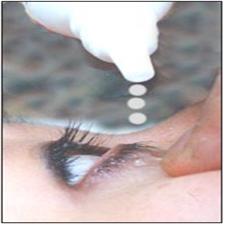
사진 91. 눈에 점안약(점안제)을 넣는다.
Copyright ⓒ 2011 John Sangwon Lee, MD., FAAP
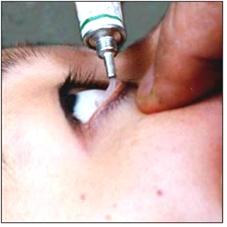
사진 92. 눈에 안연고를 넣는다.
Copyright ⓒ 2011 John Sangwon Lee, MD., FAAP
-
눈병을 점 안약(안 점적제)이나 안 연고로 눈병을 치료하는 경우가 많다.
-
눈에 점 안약이나 안 연고를 넣을 때 어린이는 점 안약을 눈에 넣지 못하게 반항하고 우는 경우도 많다.
-
이런 점 안약이나 안 연고로 눈병을 치료할 때 점안 약을 눈에 넣는 방법을 설명한다.
-
안약을 자녀의 눈에 넣기 전·후 안약을 넣는 부모는 손을 깨끗이 닦는다.
-
점 안약을 어린이의 눈에 넣은 후 대부분의 어린이들은 바로 울 수 있다.
-
바로 울면 넣은 점 안약의 대부분이 눈물로 금방 씻길 수 있다.
-
이런 이유로 일반적으로 점 안약으로 치료하는 대신 항생제 안 연고를 눈에 넣어 치료할 때가 더 많다. 그렇지 않으면 항생제 안 연고로 치료할 때 투약 횟수보다 항생제 점 안약으로 눈병을 치료할 때 점 안약을 눈에 더 자주 넣어 치료하는 경향이 있다.
-
[부모도 반의사가 되어야 한다–소아가정간호백과]-제19권 소아청소년 안과 질환–결막염 치료 참조.
-
점 안약이나 안 연고를 눈에 넣기 전에 어린이에게 약을 넣어 치료하는 이유를 간단히 설명해 주어야 한다. 무릎 위나 침대 위에 어린이를 눕히고 두 손과 머리를 꼭 잡는다.
-
점 안약을 넣을 때는 위 눈꺼풀을 위로 젖혀 올리든지 아래 눈꺼풀을 아래로 살짝 젖혀 내리고 의사가 처방한 양의 점 안약을 눈에 직접 떨어뜨린다.
-
안 연고를 눈에 바를 때는 아래 눈꺼풀을 아래로 살짝 젖혀 내린 후 안 연고를 아래 결막의 왼쪽에서부터 오른쪽으로 오른쪽에서 왼쪽으로 흠뻑 바른다.
-
아이가 점 안약을 넣게 잘 협조하지 않을 때는 머리와 손을 꼭 붙잡고 아래 눈꺼풀을 아래쪽으로 젖혀 벌리고 안연고나 점 안약을 눈에 넣는다.
-
이 때 넣은 안 연고의 일부는 안구에 묻어 있고 나머지는 눈꺼풀에 묻어 있을 수 있다. 그래도 괜찮다.
-
점안약이 든 스포이드나 안연고가 든 튜브가 안구에 닿지 않도록 주의한다.
-
점안약이나 안연고를 눈에 바르면 각막에도 약이 묻을 수 있기 때문에 잠시 동안 시야가 희미해질 수 있고 불편할 수 있다.
-
점 안약으로 눈이 따끔거려 어린이가 울 수 있다. 이런 증상의 대부분은 잠시 후 없어지는 것이 보통이다.
그 외 투약 방법 Other medications
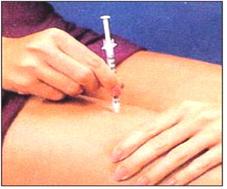
사진 93. 약물을 근육주사로나 피하주사로 줄 수 있다.
Copyright ⓒ 2011 John Sangwon Lee, MD., FAAP

그림 94. 약물을 혈관주사로 줄 수 있다.
Copyright ⓒ 2011 John Sangwon Lee, MD., FAAP
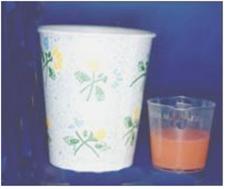
사진 95. 약물을 컵으로 먹을 수 있다.
Copyright ⓒ 2011 John Sangwon Lee, MD., FAAP

사진 96. 약물을 차 스푼으로 먹일 수 있다.
Copyright ⓒ 2011 John Sangwon Lee, MD., FAAP
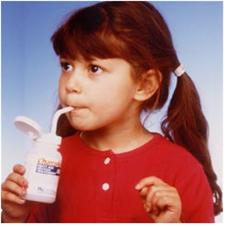
사진 97. 활성 탄말액 등을 빨대로 먹을 수 있다.
Copyright ⓒ 2011 John Sangwon Lee, MD., FAAP
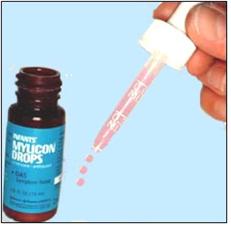
사진 98. 점적 약으로 치료할 수 있다.
스포이드로 약물을 투여할 때 한 방울(One drop)과 한 드로퍼(One droper)를 분별해야 한다. Copyright ⓒ 2011 John Sangwon Lee, MD., FAAP

사진 99. 기도 속으로 흡입 치료할 수 있는 계량 흡입기(HFA) 제.
Copyright ⓒ 2011 John Sangwon Lee, MD., FAAP
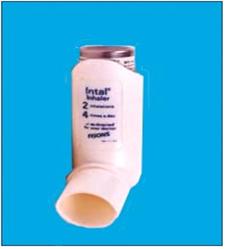
사진 100. 기도 속으로 흡입 치료할 수 있는 계량 흡입기(HFA) 제.
Copyright ⓒ 2011 John Sangwon Lee, MD., FAAP
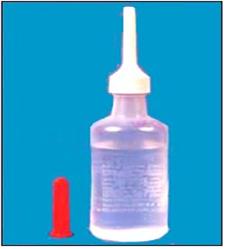
사진 101. 관장액. 변비를 소아 플리트로 관장해서 치료할 수 있다.
Copyright ⓒ 2011 John Sangwon Lee, MD., FAAP
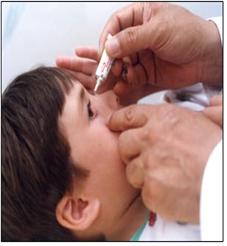
사진 102. 안 연고를 결막에 발라서 결막염을 치료할 수 있다.
Copyright ⓒ 2011 John Sangwon Lee, MD., FAAP

사진 103. 분무기로 약을 분무로 만들어서 천식을 치료할 수 있다.
Copyright ⓒ 2011 John Sangwon Lee, MD., FAAP

사진 104. 로션을 발라 건성피부를 치료할 수 있다.
Copyright ⓒ 2011 John Sangwon Lee, MD., FAAP
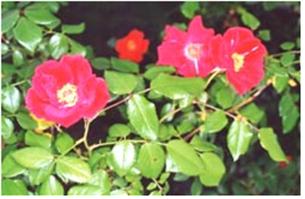
사진 105. 자녀가 아플 때 사랑은 가장 중요한 치료제이다.
Copyright ⓒ 2011 John Sangwon Lee, MD., FAAP
How to put eye drops and an eye ointment in eyes and other medication

Picture 91. Put eye drops (eye drops) into your eyes. Copyright ⓒ 2011 John Sangwon Lee, MD., FAAP

Picture 92. Put an eye ointment in the eye. Copyright ⓒ 2011 John Sangwon Lee, MD., FAAP
• Eye diseases are often treated with eye drops (eye drops) or eye ointment. • When putting eye drops or eye ointment into their eyes, children often cry and resist putting the eye drops into their eyes.
• Explain how to put eye drops into your eyes when treating eye diseases with these eye drops or eye ointments.
• Before and after putting eye drops into their children’s eyes, wash their hands thoroughly. • Most children can cry immediately after eye drops are placed in their eyes.
• If you cry right away, most of the eye drops you put in can be washed away quickly with tears.
• For this reason, antibiotic eye ointment is more often applied to the eye instead of using eye drops. Otherwise, there is a tendency to put eye drops into the eyes more frequently when treating eye diseases with antibiotic eye drops than when treating with antibiotic eye ointment.
• ww.drleepediatrics.com – See Volume 19 Children’s and Adolescent Eye Diseases – Treatment of Conjunctivitis.
• Before putting eye drops or eye ointment into the eye, briefly explain why the child is being treated with the medication. Place the child on his or her lap or on a bed and hold his hands and head tightly.
• When applying eye drops, lift the upper eyelid upward or slightly lower the lower eyelid, and drop the amount of eye drop prescribed by the doctor directly into the eye.
• When applying the eye ointment to the eyes, gently tilt the lower eyelid downward and then apply the eye ointment from left to right to the lower conjunctiva from right to left.
• If the child does not cooperate well to put the eye drops, hold the head and hands tightly, fold the lower eyelid downward and open, and place the eye ointment or eye drop into the eye. • Part of the eye ointment added at this time may be on the eye and the rest may be on the eyelid. It’s okay though.
• Be careful not to let the dropper containing the eye drop or the tube containing the eye ointment come into contact with the eye.
• When you apply eye drops or eye ointment to your eyes, your vision may be blurred and uncomfortable for a while because the medicine may also get on your cornea. • Eye drops may cause stinging in the eyes and may cause children to cry. Most of these symptoms usually go away after a while.
Other medications

Picture 93. Drugs can be given either intramuscularly or subcutaneously. Copyright ⓒ 2011 John Sangwon Lee, MD., FAAP

Figure 94. Drugs can be given by intravenous injection. Copyright ⓒ 2011 John Sangwon Lee, MD., FAAP

Picture 95. Medications can be taken in a cup. Copyright ⓒ 2011 John Sangwon Lee, MD., FAAP

Photo 96. Medications can be given with a tea spoon. Copyright ⓒ 2011 John Sangwon Lee, MD., FAAP

Photo 97. Activated charcoal can be eaten with a straw. Copyright ⓒ 2011 John Sangwon Lee, MD., FAAP

Picture 98. It can be treated with drop pills. When administering the drug with a dropper, it is necessary to distinguish between one drop and one droper. Copyright ⓒ 2011 John Sangwon Lee, MD., FAAP

Photo 99. Metered-dose inhaler (HFA) formulation for inhalation therapy into the airways. Copyright ⓒ 2011 John Sangwon Lee, MD., FAAP

Picture 100. Metered-dose inhaler (HFA) formulation for inhalation therapy into the respiratory tract. Copyright ⓒ 2011 John Sangwon Lee, MD., FAAP

Photo 101. Enema. Constipation can be treated by enema with pediatric pleats. Copyright ⓒ 2011 John Sangwon Lee, MD., FAAP

Photo 102. Eye ointment can be applied to the conjunctiva to treat conjunctivitis. Copyright ⓒ 2011 John Sangwon Lee, MD., FAAP

Photo 103. A nebulizer can be used to treat asthma by making medicine into a mist. Copyright ⓒ 2011 John Sangwon Lee, MD., FAAP

Photo 104. Dry skin can be treated by applying lotion. Copyright ⓒ 2011 John Sangwon Lee, MD., FAAP

Picture 105. When a child is sick, love is the most important remedy. Copyright ⓒ 2011 John Sangwon Lee, MD., FAAP
출처 및 참조 문헌 Sources and references
- NelsonTextbook of Pediatrics 22ND Ed
- The Harriet Lane Handbook 22ND Ed
- Growth and development of the children
- Red Book 32nd Ed 2021-2024
- Neonatal Resuscitation, American Academy of Pediatrics
- www.drleepediatrics.com 제 6권 신생아 성장 발육 육아 질병
- www.drleepediatrics.com제7권 소아청소년 감염병
- www.drleepediatrics.com제8권 소아청소년 호흡기 질환
- www.drleepediatrics.com제9권 소아청소년 소화기 질환
- www.drleepediatrics.com제10권. 소아청소년 신장 비뇨 생식기 질환
- www.drleepediatrics.com제11권. 소아청소년 심장 혈관계 질환
- www.drleepediatrics.com제12권. 소아청소년 신경 정신 질환, 행동 수면 문제
- www.drleepediatrics.com제13권. 소아청소년 혈액, 림프, 종양 질환
- www.drleepediatrics.com제14권. 소아청소년 내분비, 유전, 염색체, 대사, 희귀병
- www.drleepediatrics.com제15권. 소아청소년 알레르기, 자가 면역질환
- www.drleepediatrics.com제17권. 소아청소년 피부 질환
- www.drleepediatrics.com제18권. 소아청소년 이비인후(귀 코 인두 후두) 질환
- www.drleepediatrics.com제19권. 소아청소년 안과 (눈)질환
- www.drleepediatrics.com 제 20권 소아청소년 이 (치아)질환
- www.drleepediatrics.com 제21권 소아청소년 가정 학교 간호
- Red book 29th-31st edition 2021
- Nelson Text Book of Pediatrics 19th — 21st Edition
- The Johns Hopkins Hospital, The Harriet Lane Handbook, 22nd edition
-
Childhood Emergencies in the Office, Hospital and Community, American Academy of Pediatrics
-
Emergency Medical Service for Children, By Ross Lab. May 1989. p.10
-
Emergency care, Harvey grant, and Robert Murray
-
Emergency Care Transportation of Sick and Injured American Academy of Orthopaedic Surgeons
-
Emergency Pediatrics A Guide to Ambulatory Care, Roger M. Barkin, Peter Rosen
-
Immediate care of the acutely ill and injured, Hugh E. Stephenson, Jr
-
The Critically Ill Child, Diagnosis and Management, Edited by Clement A. Smith
-
Emergency Medical Services for Children: The Role of the Primary Care Provider, America Academy of Pediatrics
-
Quick Reference To Pediatric Emergencies, Delmer J. Pascoe, M.D., Moses Grossman, M.D. with 26 contributors
-
Manual of Emergency Care
-
응급환자관리 정담미디어
-
소아가정간호백과–부모도 반의사가 되어야 한다, 이상원
-
Neonatal Resuscitation American heart Association
-
Neonatology Jeffrey J.Pomerance, C. Joan Richardson
-
Pediatric Resuscitation Pediatric Clinics of North America, Stephen M. Schexnayder, M.D.
-
Pediatric Critical Care, Pediatric Clinics of North America, James P. Orlowski, M.D.
-
Preparation for Birth. Beverly Savage and Dianna Smith
- Infectious disease of children, Saul Krugman, Samuel L Katz, Ann A. Gershon, Catherine Wilfert
-
The Harriet Lane Handbook 19th Edition
-
소아과학 안효섭 외 대한교과서
-
제1권 소아청소년 응급의료 참조문헌과 출처
-
Other
Copyright ⓒ 2015 John Sangwon Lee, MD., FAAP
“부모도 반의사가 되어야 한다”-내용은 여러분들의 의사로부터 얻은 정보와 진료를 대신할 수 없습니다.
“The information contained in this publication should not be used as a substitute for the medical care and advice of your doctor. There may be variations in treatment that your doctor may recommend based on individual facts and circumstances. “Parental education is the best medicine.”